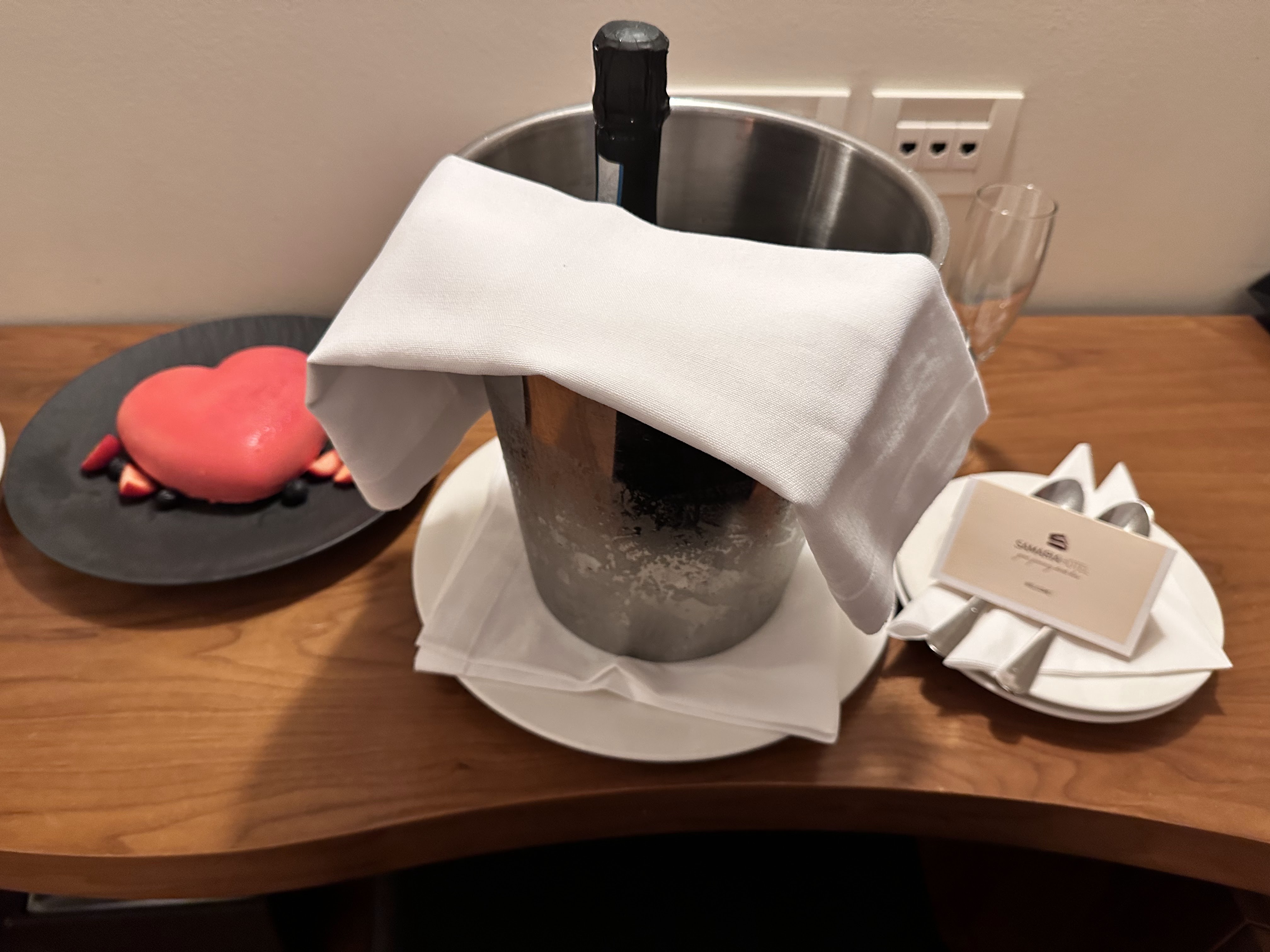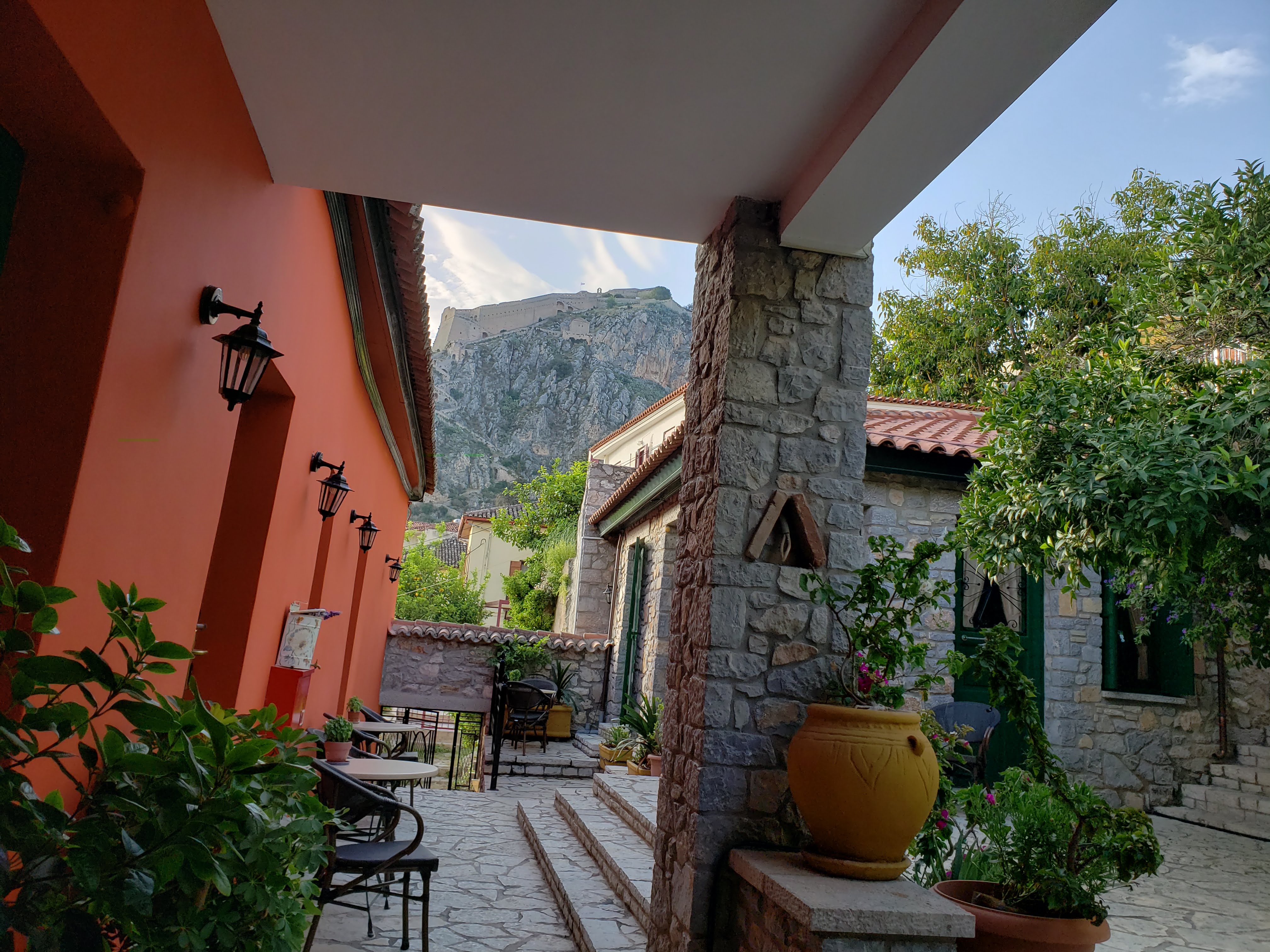
After breakfast we had to pack up our belongings then we were on our way. But before we left Nafplion, we decided to drive up to the fortress of Padimili to look around.
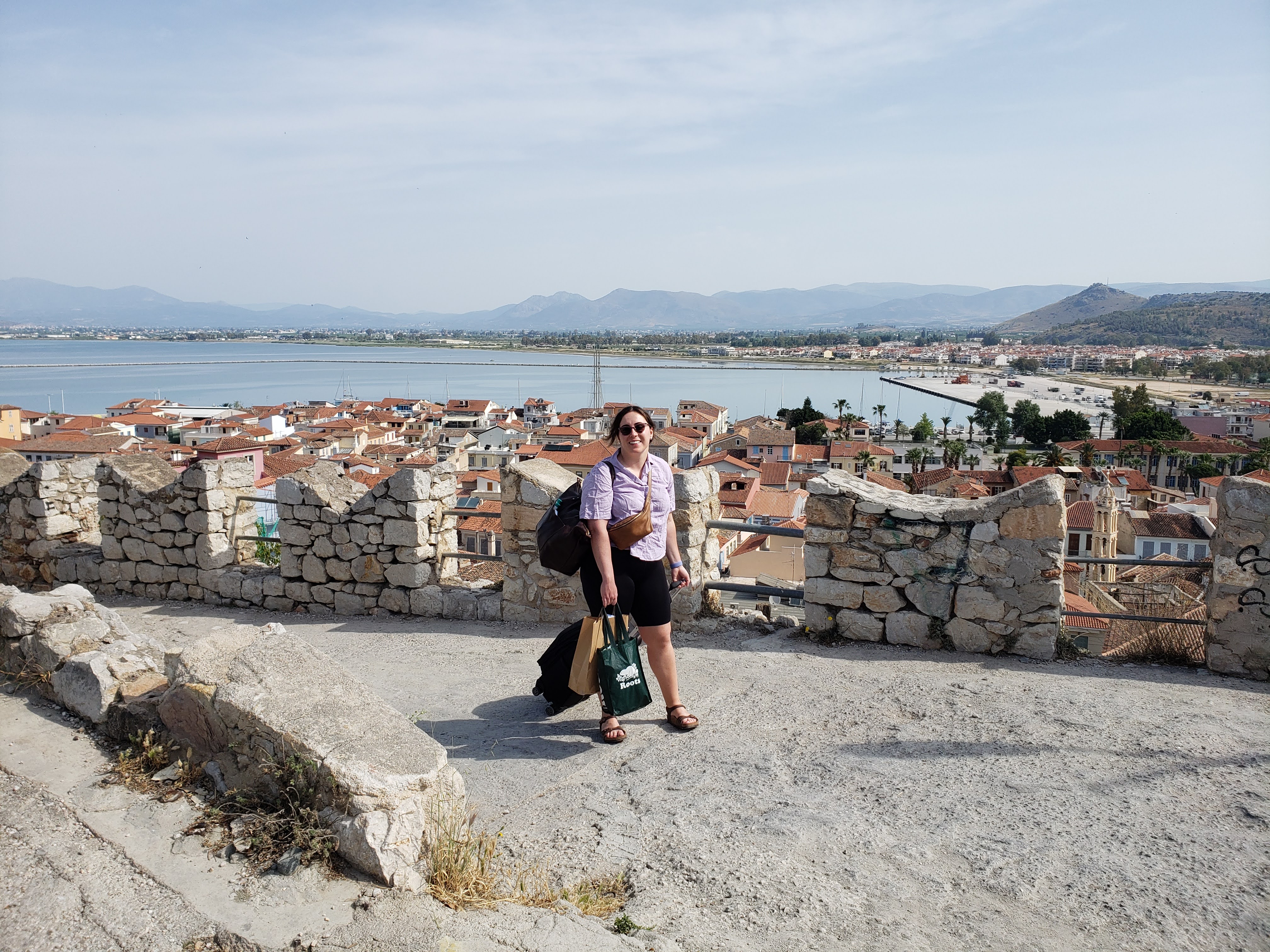
Padimili was built by the Venetians during their occupation of the area in the 17th century. It was not enough to stave off a Turkish invasion and the Ottomans recaptured Nafplion from the Venetians in 1715. The Turks operated Padimili Fortress until it was taken by the Greek resistance forces during the Greek War of Independence (1822).
The castle had great views of Nafplion, the city beach, and the surrounding country side. There were tons of flowers everywhere.
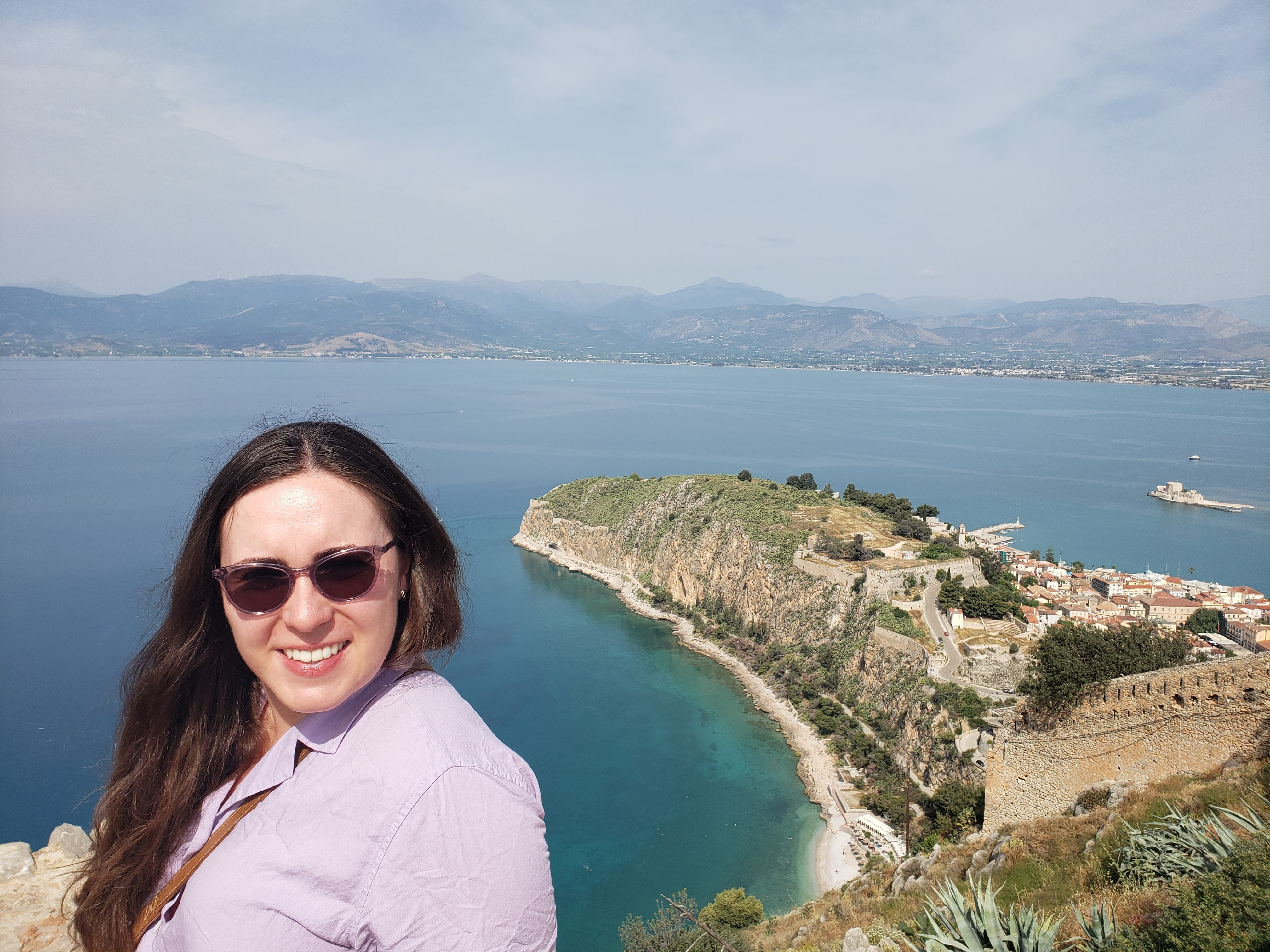
I separated from Lizy to check out a lookout up a hill through a small chasm, while Lizy decided to go to the bastion. She called me over and told me she found something spooky, so I rushed back to the bastion, to look through these abandoned old, dark rooms with her that had staircases that plunged into darkness.
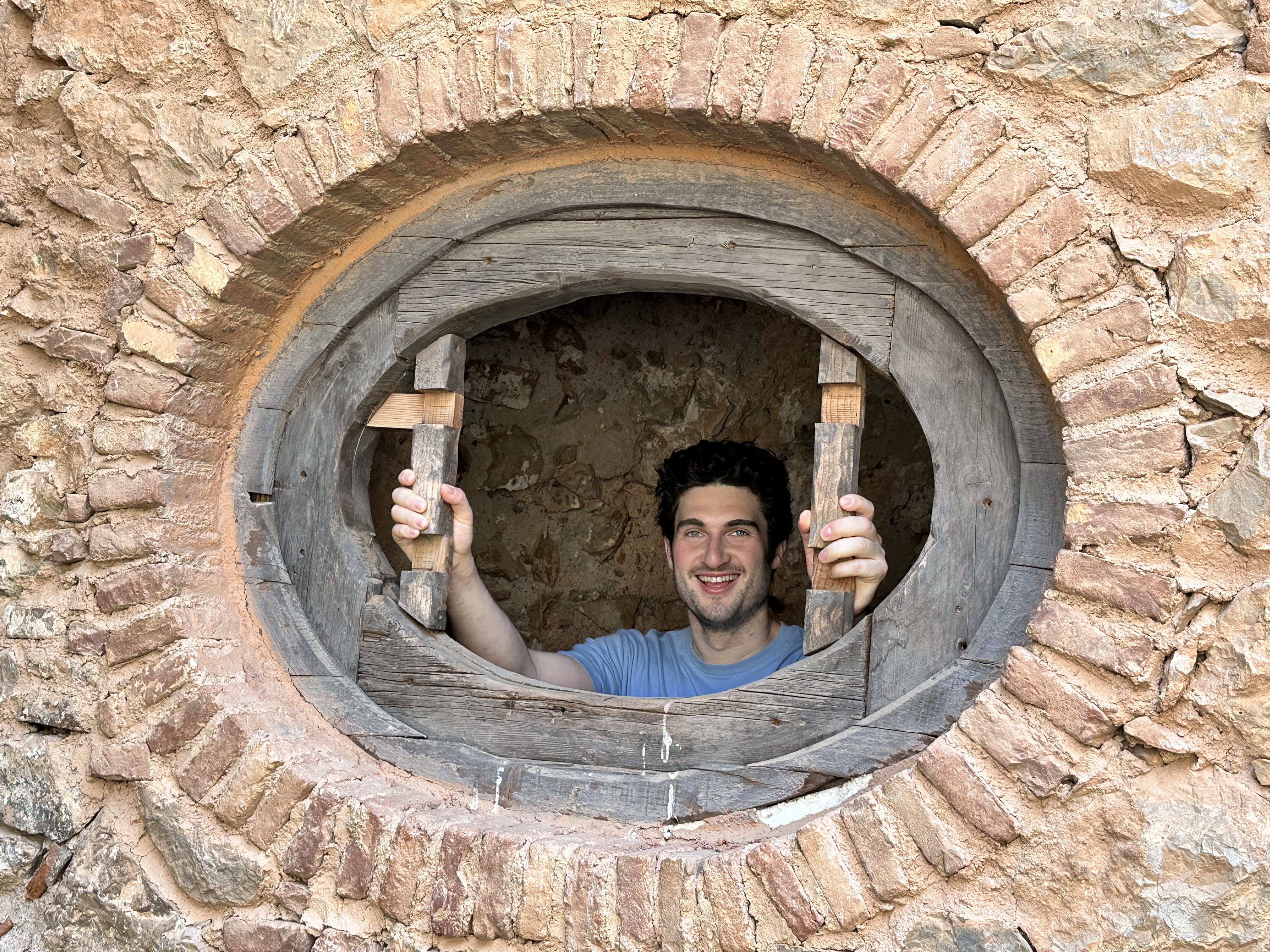
Afterwards we drove back down the hill and headed out of Nafplion. There was some congestion getting out, as there were stands set up in the street for a weekly market.
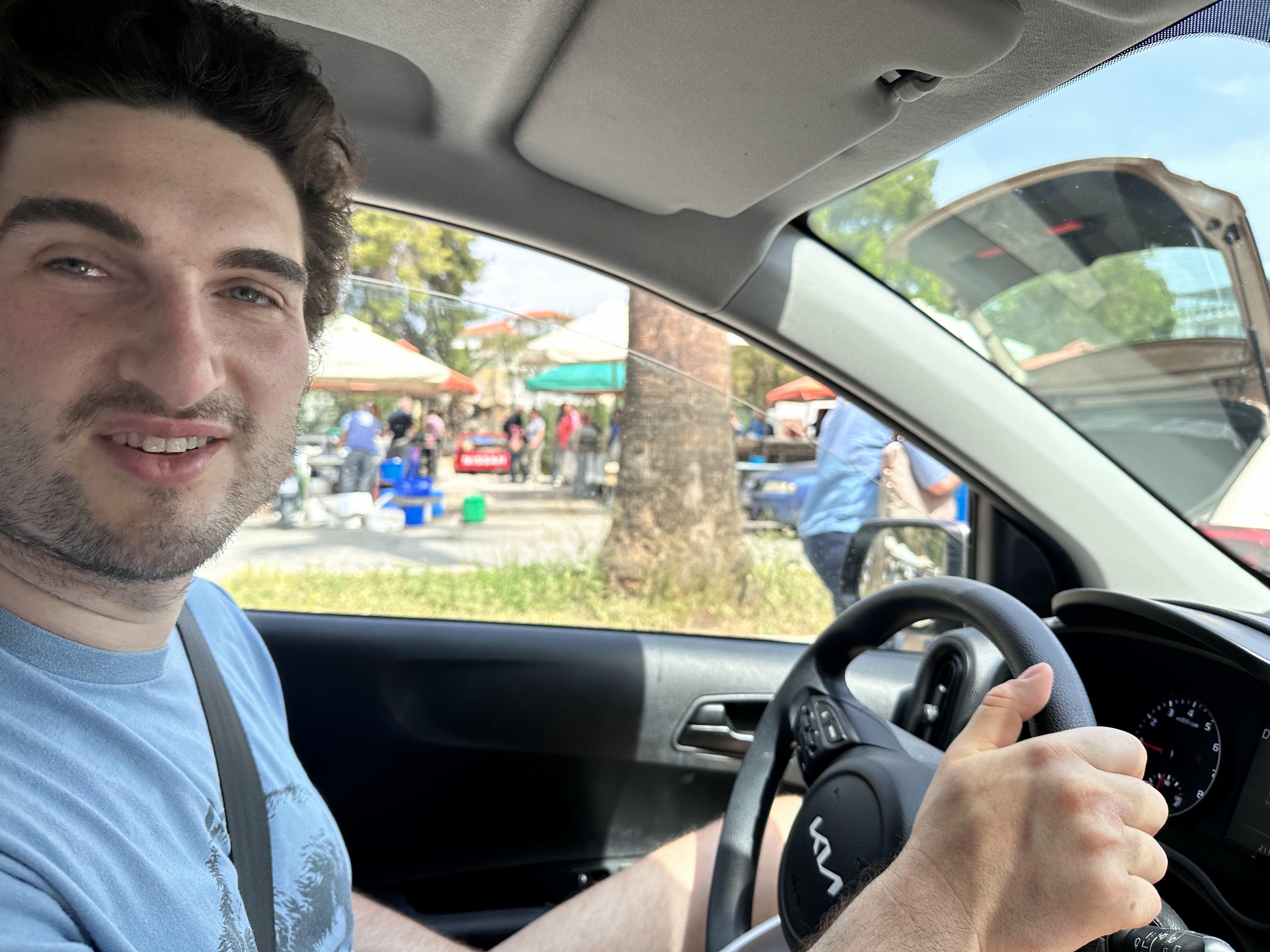
Our next stop was the archeological site of Mycenae. It was the site of the main city of the Mycenaean Empire. The Mycenaean Empire was is older than the classical Greek cities such as Athens and Epidavros. It existed between 1750BC and 1000 BC in conjunction with the Cretan, Minoan empire. We don’t know much about these early empires because their writing mostly have been lost, their writing were in hieroglyphics, and their writings were used for administrative bookkeeping tasks. We saw examples of their writing script, Linear B, in the Archeological museum in Athens together with the Minoan script it is based on, Linear A. They looked like Egyptian hieroglyphics to me. I suppose they were highly influenced by the Egyptians as I believe the Egyptians were the most powerful civilization of that time period.
Another reason for the lack of information of the civilization is because of the late bronze age collapse (1200 - 1150 BC). Most civilizations in the region, including Mycenae fell into decline during this period for unknown reasons. The collapse lead to a lapse in the oral records being passed down.
However, it is believed that some of the classical Greek myths from Homer’s epics refer to Mycenae, which at that point was already a lost civilization. Homer’s epics, the Iliad and the Odyssey, are now believed to be written accounts of poems that had existed in oral forms for many years. So it seems possible that information of Mycenae that was passed down orally could’ve survived in these epics.
In the Iliad the king of Mycenae is Agamemnon. Agamemnon, in the Iliad, leads the Greeks in the mythical Trojan war. After surviving the war and defeating Troy, he finally sails back to Mycenae after many years. However, instead of living the rest of his years happily ever after he meets a tragic fate. His wife, who had gotten lonely after Agamemnon had been gone for many years had taken a lover. The two of them devised a plan to kill Agamemnon, so the lover could take his place as king of Mycenae. Greek stories tended to have tragic endings, unlike modern hollywood movies. The plan was a success, but now the two had to contend with Agamemnon’s son who found out about the murder and swore to avenge his father. The son’s story of revenge is most famously told my Aeschylus in his trilogy of plays the Oresteia.
The archeological site was situated on top of a great hill with sweeping views of the surrounding countryside. This was obviously an intentional choice to make defending the city easier. The entrance into the city was giant arch with a triangle support at the top that had two lions engraved. Both the lions heads were missing. They had been stolen in Roman times because of the valuable jewels used for their eyes.
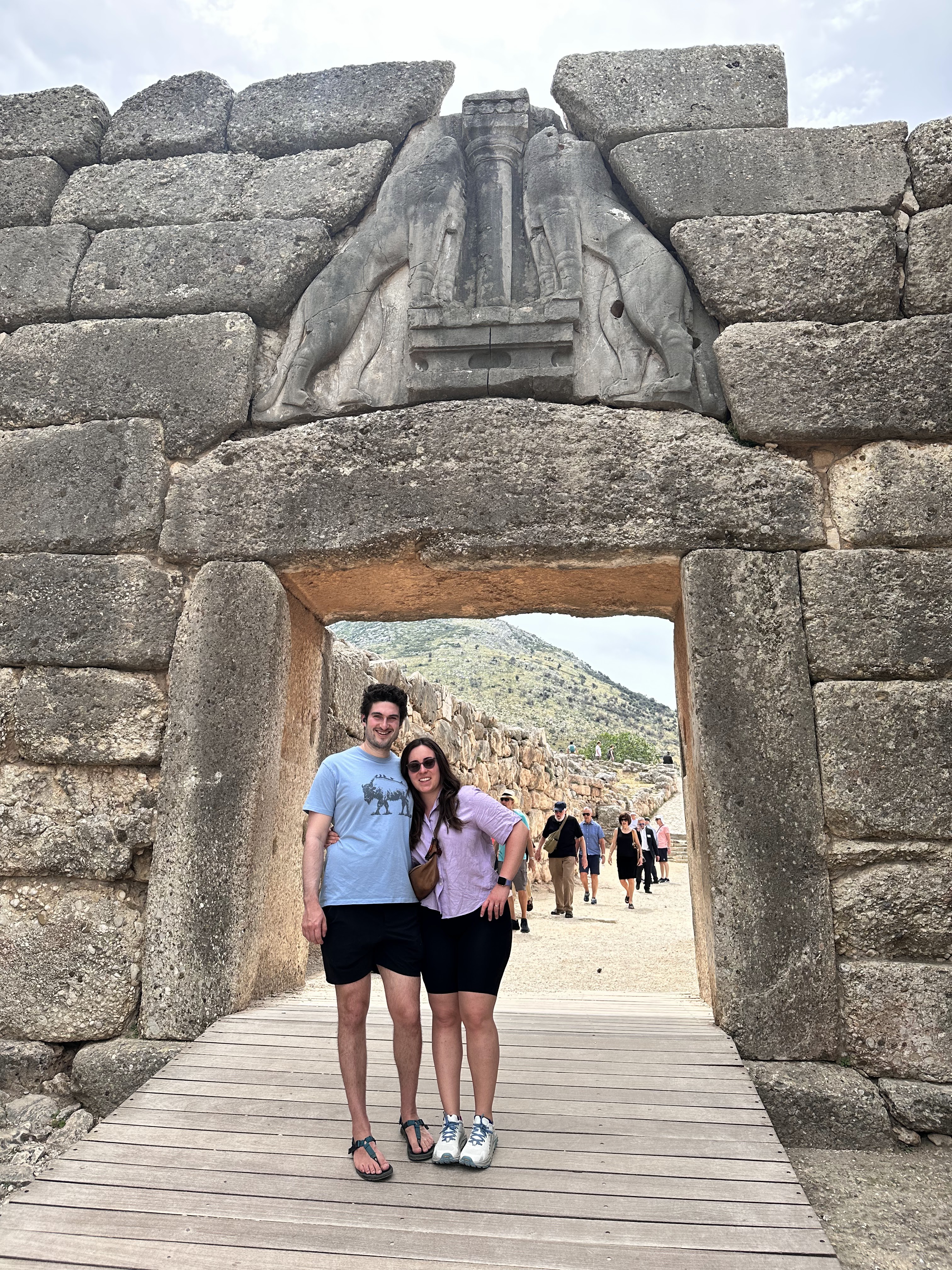
Within the city most of the buildings were destroyed to their bases. We saw a grave site where kings were buried inside the city limits. This is where the Mask of Agamemnon was found, a golden burial mask housed in the Athens Archeological Museum.
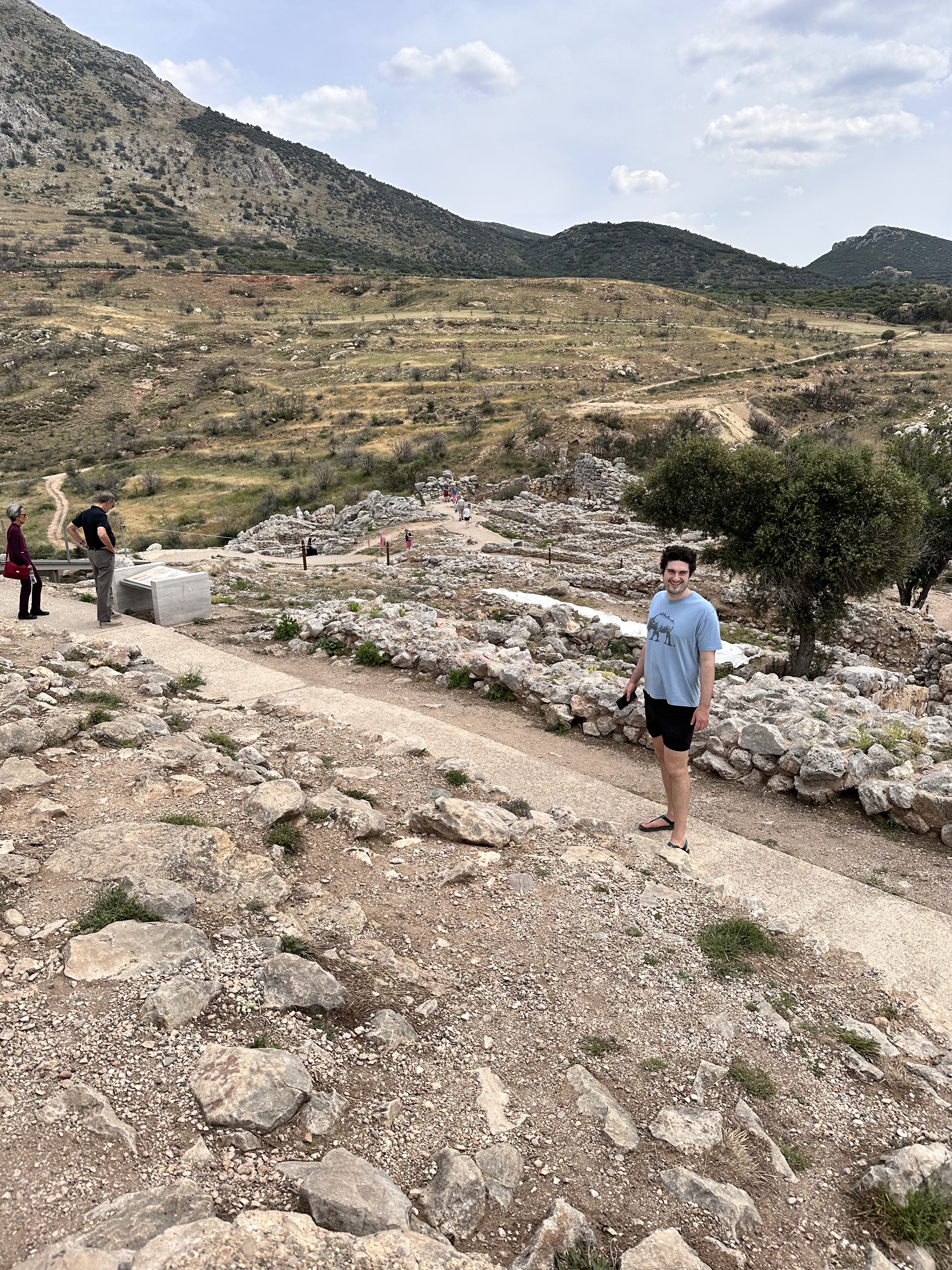
The most impressive structure within the city limits was a water cistern. It extended underground to accommodate storing as much water as possible. In ancient times a big issue for cities was having a water supply, so cities would build structures to store rain water. We walked down into the water cistern. The marble was quite slippery.
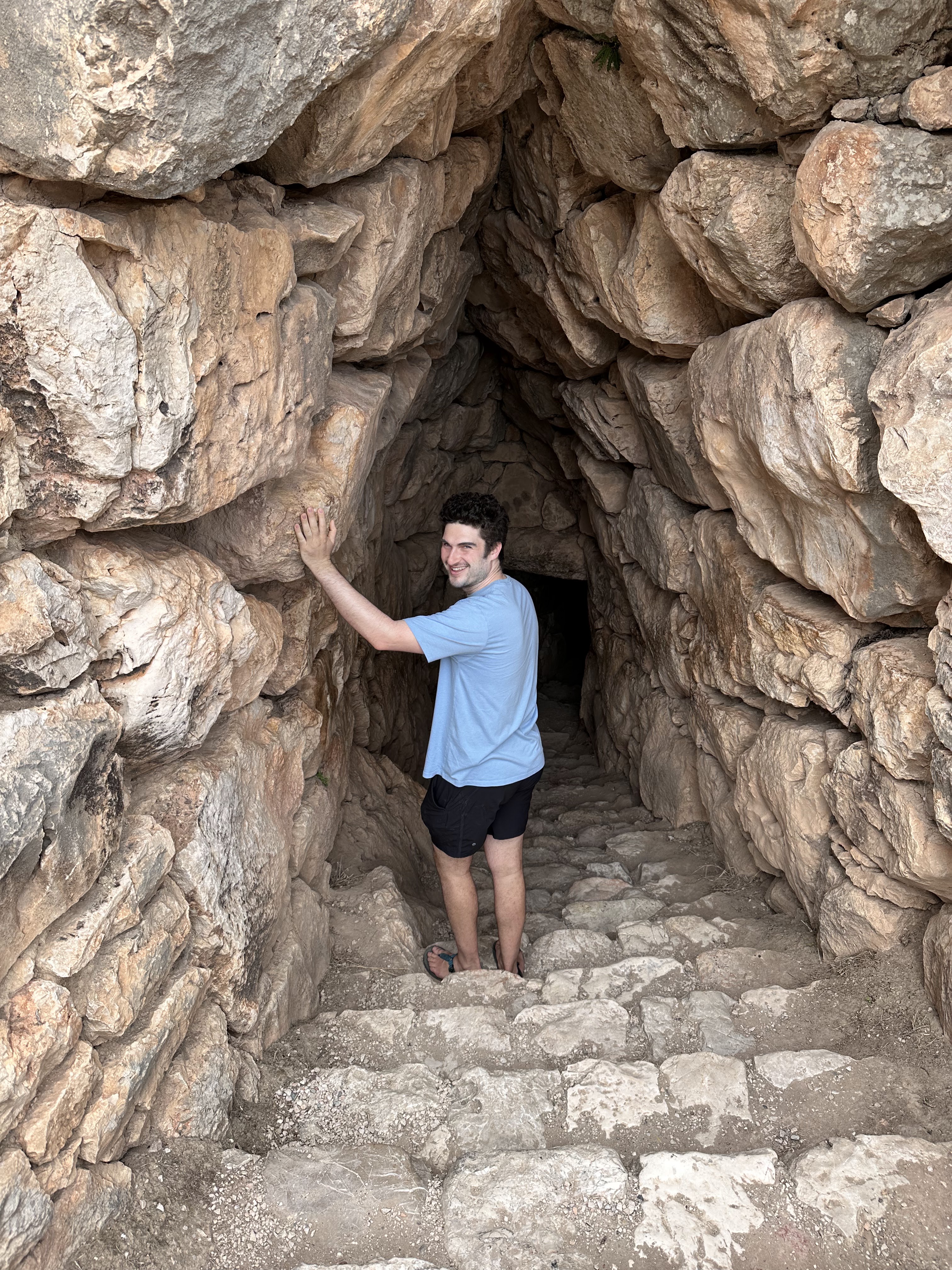
Outside the city walls were the most impressive standing structures of the civilization. A set of giant domes called Tolos’s used as burial sites for important people of the city. One of the giant domes is named after Agamemnon the mythical king. For a king that probably only exists in myth, he’s buried in too many places. First they found him with his mask in the grave site within the city limits, now here in a giant dome as well. The domes were extremely impressive. Hard to imagine how such an ancient society could build such smooth domes.
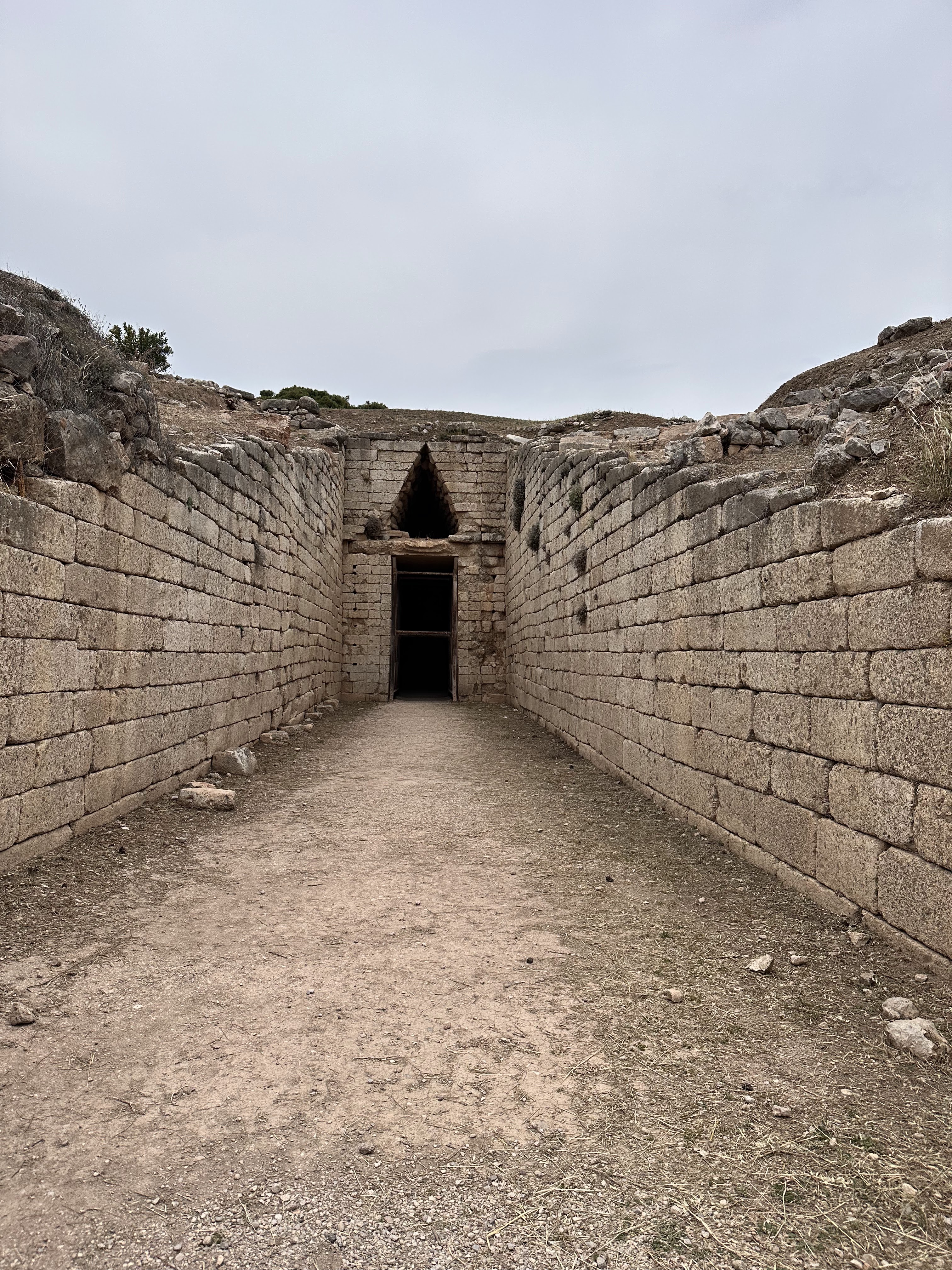
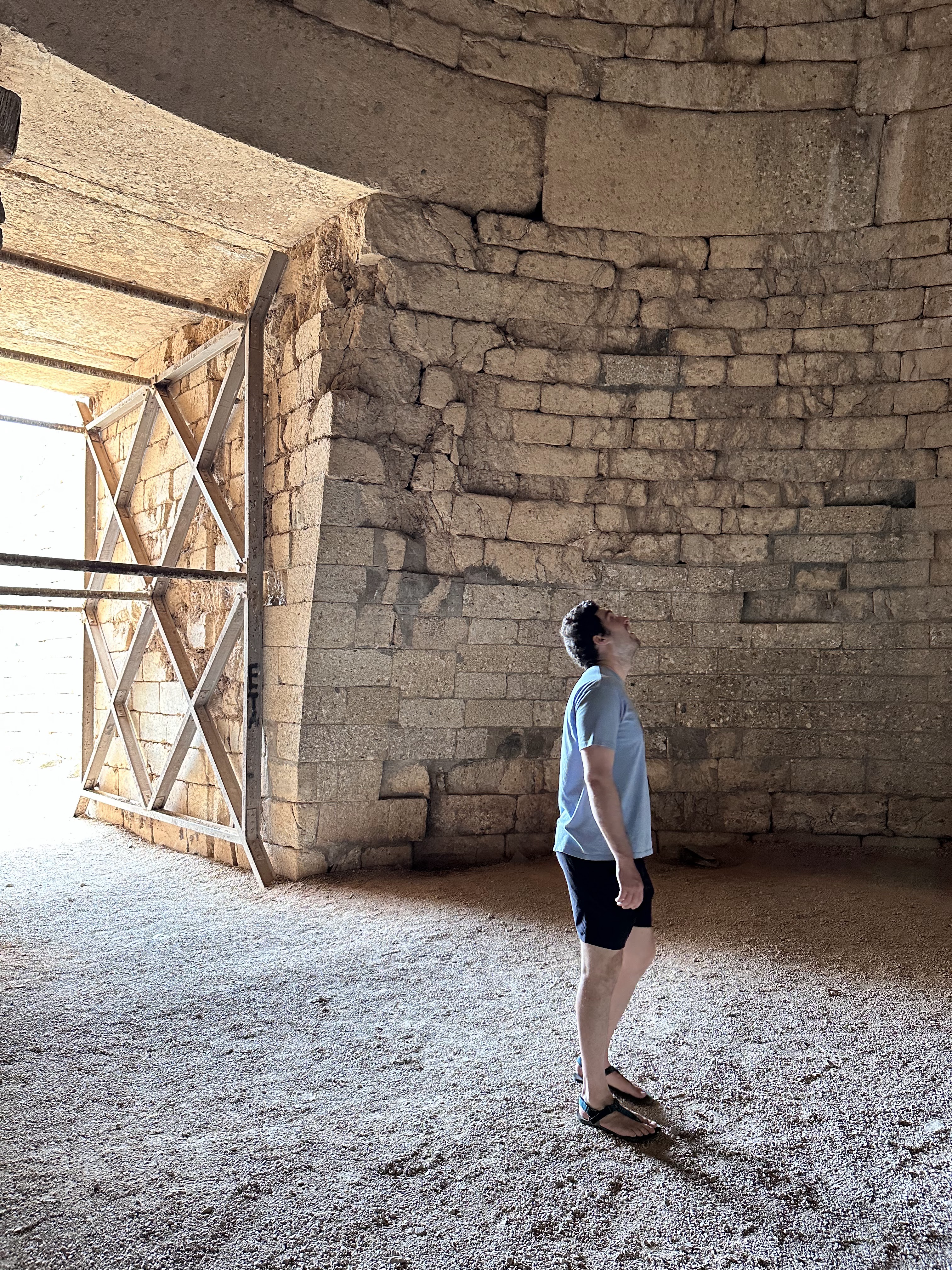
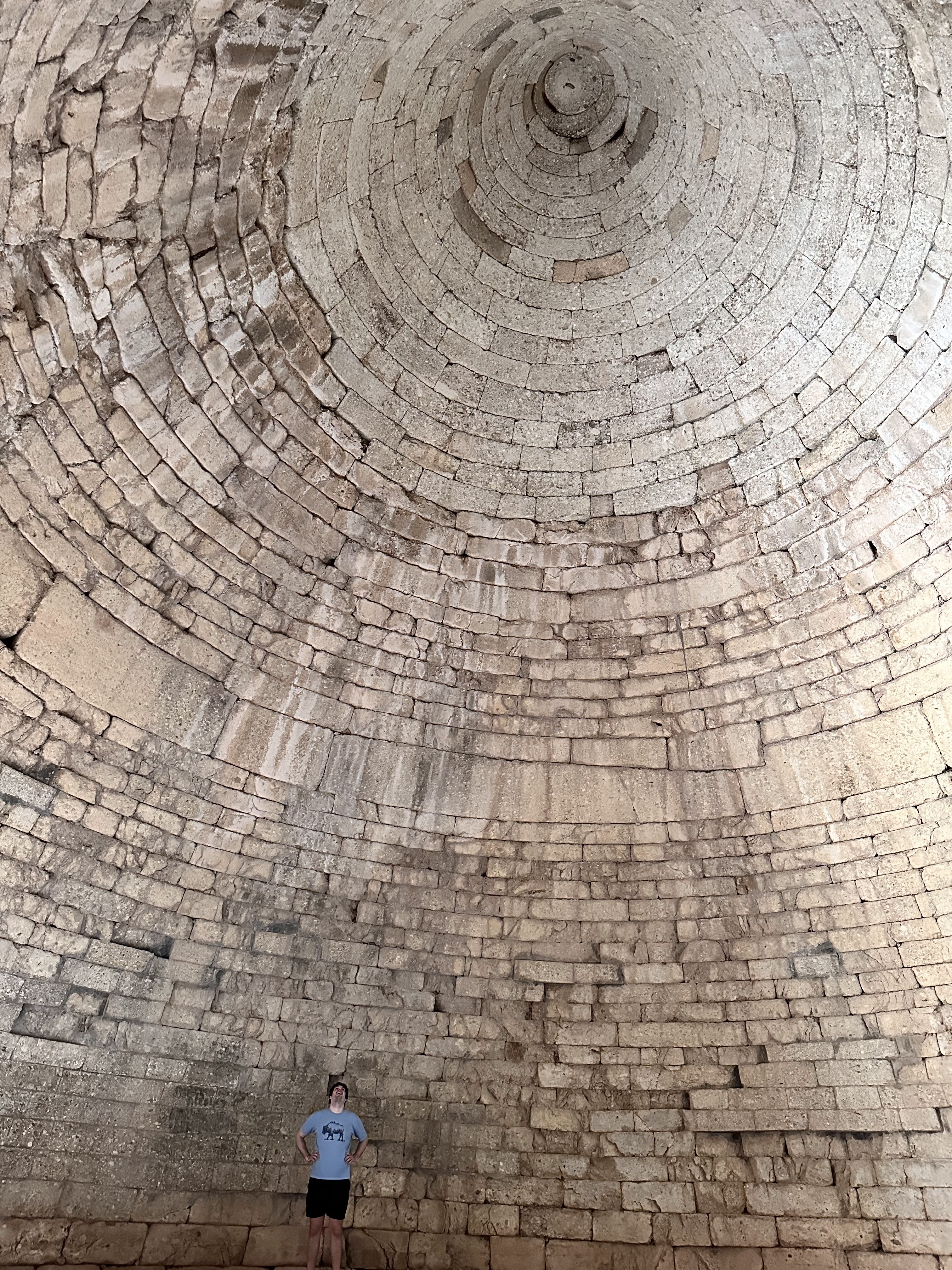
We left Mycenae in a hurry to catch our flight out of Athens airport to Crete. The flight went smoothly and we made it to Crete in the evening.
At the Chania airport I had some trouble finding the car rental agency I had booked our car with. I saw Hertz, Budget, and Avis, but where was Athens Car rental? After I had looked at all the stands and walked outside. Lizy came over to me with a crazy look, middle aged, Greek guy.
“I found him.” Lizy said, referring to the clerk from Athens car rental.
“No I found you.” he said.
“What, I found you!”
“We found each other.”
After getting our car we drove to our hotel in Chania. Once we got to the room the hotel brought us up a bottle of champaign and a large heart shaped cake as a gift for our honeymoon. Since it was the one hotel on our trip to do something special for our honeymoon, the gesture made the beginning of our stay very festive and made us excited for the rest of our time in Crete.
